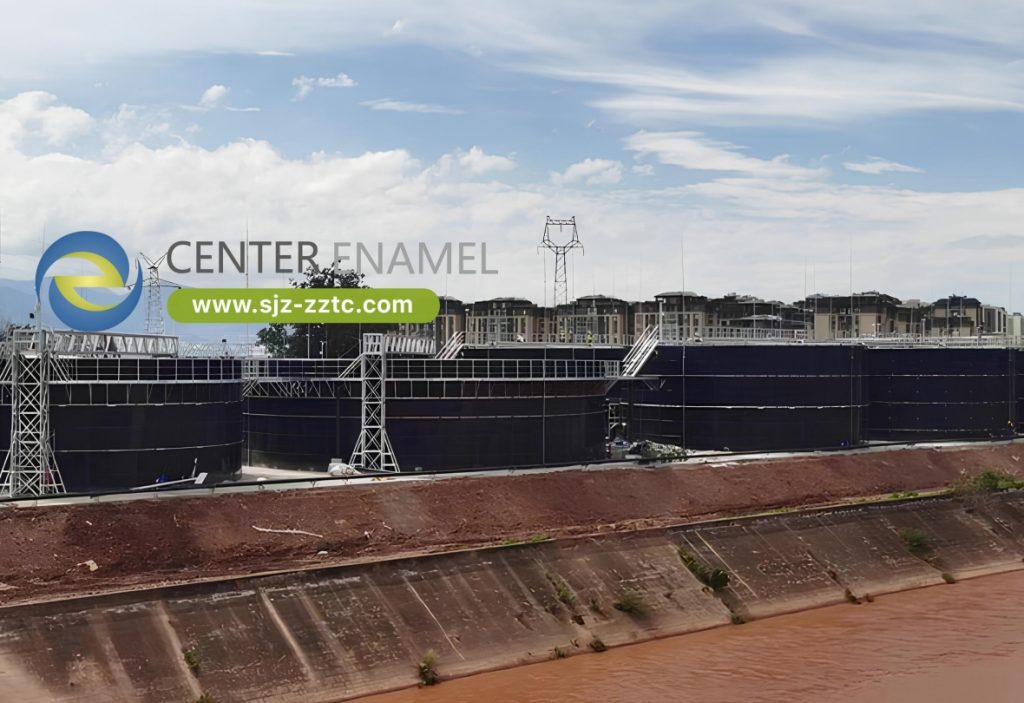Leachate Treatment Solution: UASB System for Landfills and Waste Facilities | Center Enamel

Leachate is the liquid that percolates through solid waste, extracting dissolved and suspended materials along the way. In landfills and waste treatment facilities, leachate typically contains a mix of organic and inorganic compounds, heavy metals, and other contaminants. Its complex composition poses significant challenges for traditional treatment methods. Ineffective treatment can lead to environmental contamination of soil and groundwater, posing risks to public health and ecosystems.
The UASB system addresses these challenges by leveraging anaerobic biological processes to degrade organic pollutants in leachate. This technology not only reduces contaminant load but also generates biogas, offering a dual benefit of waste treatment and renewable energy production.
Center Enamel provides advanced UASB systems that are engineered to meet the rigorous demands of modern landfills and waste facilities while ensuring compliance with environmental standards.
Key components of the UASB system include:
- Inlet Zone: Where leachate is introduced and initially mixed with the sludge.
- Sludge Blanket: A concentrated zone of anaerobic microorganisms responsible for the degradation of organic pollutants.
- Gas-Liquid-Solid Separator: This unit collects biogas while allowing treated water to exit the reactor.
- Outlet Zone: Where effluent, significantly reduced in organic load, is discharged for further polishing or reuse.
The design of the UASB system promotes high efficiency and operational stability, even in facilities with fluctuating leachate compositions and flow rates.
Advantages of UASB Systems for Leachate Treatment
1. High Treatment Efficiency:
UASB systems are renowned for their ability to achieve substantial reductions in chemical oxygen demand (COD) and other organic pollutants. The anaerobic process effectively decomposes complex organic compounds, ensuring that the leachate meets environmental discharge standards or is suitable for reuse in non-potable applications.
2. Energy Recovery:
A significant advantage of the UASB process is its capacity to produce biogas during treatment. This biogas, rich in methane, can be captured and utilized as a renewable energy source to generate electricity or heat. The energy recovery aspect not only offsets operational costs but also contributes to the overall sustainability of waste management practices.
3. Compact and Modular Design:
UASB reactors offer a compact footprint compared to traditional aerobic systems. Their modular design allows for scalability, enabling facilities to adjust capacity as waste volumes or treatment requirements change. This flexibility is particularly beneficial for landfills and waste facilities with limited space.
4. Reduced Sludge Production:
Compared to conventional aerobic treatment methods, UASB systems generate less excess sludge. This reduction in sludge volume translates to lower handling and disposal costs, further enhancing the economic feasibility of the treatment process.
5. Robust Performance in Variable Conditions:
Leachate characteristics can vary significantly over time due to seasonal changes or variations in waste composition. The UASB system’s design and operational resilience allow it to maintain high treatment performance despite these fluctuations, ensuring consistent compliance with regulatory standards.
Application in Landfills and Waste Facilities
UASB systems are ideally suited for the treatment of leachate in both landfills and industrial waste facilities. In landfills, where the management of leachate is a constant environmental concern, UASB reactors provide a reliable method to mitigate the risk of groundwater contamination and reduce the overall pollutant load. In waste facilities, where diverse waste streams generate complex leachate profiles, the UASB system’s robust design ensures effective treatment across a broad range of conditions.
Furthermore, the biogas produced during the anaerobic digestion process can be harnessed to support on-site energy needs, turning a waste treatment challenge into an opportunity for renewable energy generation. This integrated approach not only improves environmental outcomes but also enhances the operational economics of waste management.
Why Choose Center Enamel’s UASB Systems?
Center Enamel is a global leader in the design and manufacture of advanced treatment systems for environmental applications. With decades of industry experience, we combine engineering excellence with a commitment to sustainability to deliver UASB solutions that are both reliable and efficient.
- Innovative Engineering:
Our UASB systems are engineered using state-of-the-art design methodologies to ensure optimal performance under variable operational conditions. We utilize advanced modeling and precision manufacturing techniques to deliver systems that are robust and adaptable. - Customized Solutions:
We understand that every landfill and waste facility presents unique challenges. Center Enamel offers tailored solutions that are designed to meet the specific requirements of your facility, ensuring optimal treatment efficiency and compliance with all relevant environmental regulations. - Sustainability Focus:
Our commitment to sustainability is evident in every aspect of our UASB systems. By integrating energy recovery and minimizing waste sludge production, our systems contribute to a circular economy and reduce the overall environmental footprint of waste management operations. - Proven Track Record:
With successful installations in numerous countries, Center Enamel’s UASB systems are trusted by waste management professionals around the world. Our solutions have consistently demonstrated high performance and long-term reliability in challenging environmental conditions.
For more detailed information on how Center Enamel’s UASB systems can be integrated into your landfill or waste facility, please contact us. Our team of experts is ready to assist with customized solutions designed to meet your unique treatment needs and regulatory requirements.
